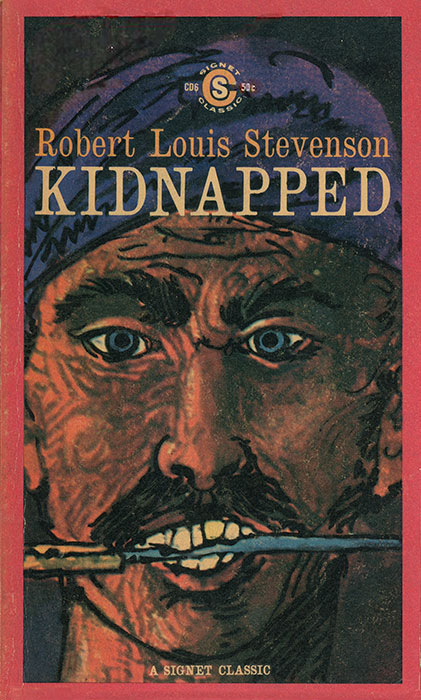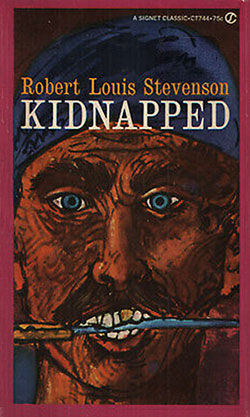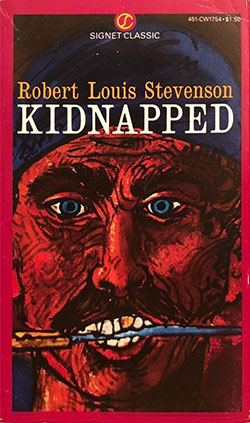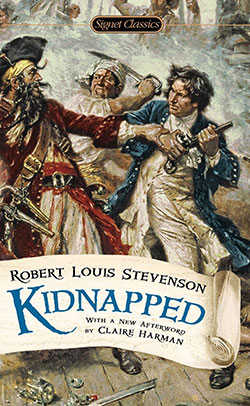Some freebies (with no trailers):
• Marie’s Room (2018): Kenny Guillaume and Dagmar Blommaert (Bruges, Belgium) [.5 hrs]
After I play Gone Home Steam tells me that I might also like Marie’s Room, a free half-hour game. But I don’t! It’s just someone’s exercise in set-building — yup, good job, very pretty lighting — with some truly terrible middle-school storytelling stuffed into its pockets after the fact. (“Dear diary, I saw that man again!”) It received a bunch of positive press, which just goes to show that you still can’t trust the world of games to know wheat from chaff.
• System Syzygy (2018): Matthew Steele (Boston, MA? not sure where this guy is) [7.5 hrs]
System Syzygy is free free free and is a loving homage to some games from 30 years ago that I feel very fondly toward, (Namely these three). The genre here is puzzle grab-bag with some degree of “metapuzzle” that ties it all together at the end. (As readers are probably aware, I was involved in the development of some metapuzzle grab-baggery lately, so this sort of thing was on my mind.) This guy did good. Sure, it has the problems endemic to the genre — unevenness, occasional unrewarding opacity mixed in with the rewarding opacity, and some puzzles that are more “interesting” than they are fun. There’s one puzzle here that’s about five times harder than any of the others (it’s a triple-decker Lights Out variant) and it shows up early on. But really this is a class act aimed at a very narrow nostalgia market — mine — and I’m grateful. (The EGA-style graphics are excellently accurate to the era.) I chomped through it hungrily in two days.
Meanwhile in backlog business. On November 7, 2014, GOG gives away Little Big Adventure for free. I think it was to promote some kind of “Vive la France” sale. Who cares, right? Free.
• Little Big Adventure (US title: Relentless: Twinsen’s Adventure) (1994): Adeline Software (Lyon, France) [played for 2.5 hrs]
(This game is 25 years old and has no real trailer. The thing above is what a retro-repackager threw together for a recent Steam release and only contains footage from the first 10 minutes of the game. But that’s what there is.)
This is a game that I owned and played to completion in 1995. At 16 I was still young enough to be enveloped by the reality of every game I played, to be subsumed into its order-of-the-universe, and I remember this game being both intimate and expansive, like the best toys, in a way that set it apart as something special. The text and story were awkward — so in fact was some of the actual gameplay, though I got accustomed to it — but the basic sensory make-believe of the thing felt pure and true and welcoming. Like a beloved dog: it can’t speak but it has heart anyway, and is attuned to the things that matter. The game left a sweet, soulful, animal impression that I can still access today.
I hadn’t replayed it since, and I was truly looking forward. I thought I had a treat, and a sentimental journey, in store. I am thus very sad — pained! — to report that the mechanical problems with this game have aged terribly, to the point that I don’t think it’s possible to recapture that feeling and revisit that dream. Or at least it wasn’t possible for me this month, with the degree of impatience and frustration that currently inhabits me. Having to replay the same first 10 minutes of action over and over and over and over because of the stubbornly unhelpful save system; being punished for the very faintest of navigational miscalculations by getting stuck in an inescapable loop of damage until the character dies. These things hurt my feelings today in a way that at 16 they didn’t. Have I gotten softer? Harder? More impatient? Less masochistic? All I know is I couldn’t stomach it enough to get past it, to breathe the dollhouse air and smell the little Lego flowers. So I had to stop. It made me sad but that’s how it is.
November 11, 2014: I buy in to “Humble Indie Bundle 13” for $7.48, a price chosen to Beat The Average and thereby net me nine games. It’s been almost five years and I still haven’t played any of ’em! Here they are.
• OlliOlli (2013): Roll7 (London, England)
Well, this one wouldn’t start. I don’t know why. I tried several different things but it just wouldn’t. As you can see it’s not something I’m too torn up about. Still have about 150 games to get through, so there’s no time to be precious. If it won’t run, I’m not playing it. Next.
• Insanely Twisted Shadow Planet (2011): Shadow Planet Productions (= Fuelcell Games & Gagne International(= Michel Gagné)) (Seattle, WA) [7 hrs]
Insanely Twisted Shadow Planet is snazzy concept art in motion, by a real animator guy. The art direction is the point. Heck, even the title is art direction! And to sustain that art direction is a serviceable, unremarkable, good-natured game. (It reminded me a little bit of Guacamelee in this respect.) The trailer is absolutely representative in every way. If you want to play around with a thing that looks like that, this is the game for you. If you want more than that, I have sad news.
By the way, world: this game took me 7 hours because it mistakenly defaulted to my DUMB SLOW graphics processor instead of my SMART FAST one, and I didn’t realize what was going on until I was at the final boss. I thought the game was deliberately slow and meditative. “Atmospheric.” Kind of frustrating that way, but I figured it was their choice! The fast way that it’s supposed to be is much, much better. Too late for me!
• Tower of Guns (2014): Terrible Posture Games (= Joe Mirabello) (Sharon, MA) [played for .5 hrs]
This game isn’t for me but that’s okay! It seems like a great idea: randomized, hard, shoot-or-be-shot 3D obstacle course, not too long (pitched as lasting “a lunch break”). You acquire more options the more times you play, so there’s a sense of long-term progression even as it repeats itself. (People really seem to love that, these days. Anything to avoid the sensation of stasis!) Atmosphere is half-silly, half-menacing. No real investment in the specifics but enough atmosphere to transport you, in the spirit of long-ago Quake et al. No drooling demons, just big cartoon cannons. No anger, just danger. I approve. I think this guy did great. (Way to go, Sharon, MA!) But the thing is… I’m not very good at first-person shooterizing, I never have been and I never will be. When I play first-person games I’m always in it for the exploration and the sense of make-believe. Tower of Guns expects the player to be in it for the game. Uh-oh! Waiter!
• Amnesia: A Machine For Pigs (2013): The Chinese Room (Brighton, UK) [6 hrs]
Hell of a subtitle. Amnesia is of course the sequel to Amnesia. Another haunted house walking tour with the same plot: “oh god, who’s responsible for these unimaginable horrors” (answer: you; see title for details). As in the original, anticipating the monsters is scary, and dealing with them isn’t. But there’s plenty of anticipation to go around. The first hour or so, in which basically nothing happens, had me absolutely gripped. After that: whatever. The storyline is Sweeney Todd does Dr. Moreau, which is probably a smidge more interesting than Dracula does Lovecraft from the first game, but the writing runs long and repetitive and pretentious, and tangles itself into pointlessly confusing knots by the end. Some people complained that the gameplay was too simplistic and linear compared to the original; personally I’m very happy to be led by the hand down a straight hallway, so long as it’s a rewarding enough hallway. This game means well but could have used an editor.
Also: “Weird ungodly classical music from a nightmare world” gets written into a lot of horror games and movies, but it’s harder to compose than you might think. There’s a piece in here that does a fine job of it. Kudos!
• Jazzpunk (2014): Necrophone Games (Toronto, CA) [2 hrs]
High-energy post-retro nonsense! Actual nonsense; silly nonsense. Hipsterism, to be sure, but at least the kind that picks and chooses its influences with panache. I laughed aloud at truly stupid crap because the proceedings were properly manic and stylized. (e.g. you dial the Kremlin and the voice that answers informs you that you’ve reached “Kremlins 2: The New Batch.” That would be unfunny in a movie, but in the middle of a conceptual tornado it managed to surprise and amuse me). These days pastiche is the fundamental mode of all culture, so pastiche-as-comedy is no longer viable. Mad Magazine is a fossil. Yet Jazzpunk manages to seem like something rather than nothing, by channeling it all through the psychedelic inanity of a primitive 3D engine, where it can no longer be passed off as well-formed. It can’t be “merely lame” because it’s too far gone toward real madness and/or incompetence. This kind of prank-dream is probably as close to Airplane! as we can get in a post-Quentin Tarantino world. I admired it for being near-frictionless, un-game-like: it really is just a comedy experience that happens to be interactive. I’ll forgive it whatever it needs to be forgiven, because: it’s some new sort of thing, of its own invention, and god bless it for that.
Maybe some of the principle is the same as those Firesign Theatre albums that used to delight me as a kid despite my understanding them almost not at all. Are my feet on the ground? No? Is everything whirling around? Yes? Excellent. That’s artistic insight enough for me! I say live it, or live with it!
• Risk of Rain (2013): Hopoo Games (Seattle, WA) [played 1.5 hrs]
Another game with a simple foundation (shoot monsters and don’t die) on top of which a towering skyscraper of ADD-ONS POWER-UPS CHARACTERS UNLOCKABLES etc. has been built. It’s depth, but it’s cheap depth. If you want to evolve checkers you can either invent “Chess” or you can invent “Hellz Yeah Balancepunk Checkers!!” in which a deck of cards has been added that determines each player’s special power for that game, and the board is randomized before play so that certain squares impart abilities when you land on them, and so on and so on. (I just now coined “Balancepunk.”) To me it seems like the unimaginative way forward but some people really love this sort of thing and are convinced it’s the future. “Is the system more complex? Is the path to mastery ever longer, and paved with ever more bric-a-brac? Does it contain 200 of something that I can try to collect all 200 of? Woo-hoo!”
Personally, I’ll always be a foundation-dweller; I’m compelled to explore the cellar thoroughly but not to try to get to the roof of the unlockable skyscraper. The cellar of this game is a decent little run-around-and-shoot game with a serious case of the tinies. Everything that matters is about 6 pixels big. But: they are real pixels! They never overlap or change size. Gotta respect that. Also the music is really very professionally done, for what it is. I had a 60 minutes of fun poking around, and then 30 minutes of “oh it expects me to want to really get good at this?” and then I stopped.
• The Novelist (2013): Orthogonal Games (=Kent Hudson) (San Francisco, CA) [2 hrs]
I like indie games and their ambitions and their pretensions. I really do. Mix it up! Experiment. Throw weird stuff at me. Get things wrong sometimes. By all means!
This is an experiment that doesn’t work because it isn’t good enough. It’s not fun or interesting to play. That’s okay! Keep going, everyone!
Was gonna complain about “choice” here but it started to balloon so I transferred it to its own entry, which may or may not get rounded off and posted at some point. In short: “choice” in games is a false god. Nobody really cares about “choice” and it doesn’t mean what game designers want it to mean.
This game makes you chooooooooooose every day between whether dad’s precious time and energy is spent on himself, on mom, or on little Johnny. Once you’ve chosen, you get told, very somberly (molto sombrero), that the person you chose felt better! as a result of the choice! but alas! the two you didn’t choose felt worse! as a result of the choice! And now… on to the next choice! This is framed as mature food for thought but to my mind it’s reductive in an immature way. Loving your family is nothing like keeping a tally of points for each person; or at least it shouldn’t be.
As is often the case in computer games, the designers’ compulsion to build the model in the first place is far more revealing about human nature than any insight that they managed to put into the model. And this model is really super simplistic. It’s basically a 9-question “what are your priorities?” quiz from Modern Dad magazine, rendered in the style of Gone Home — you slink quietly around the 3D house and look at their stuff. Ostensibly you’re a ghost haunting a family’s private spaces, but it’s more like you’re a PLAYER haunting a NON-GAME, trying not to be seen.





